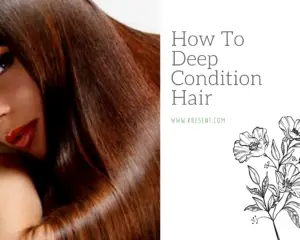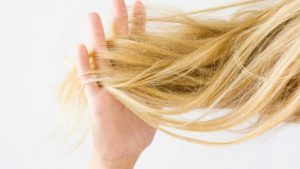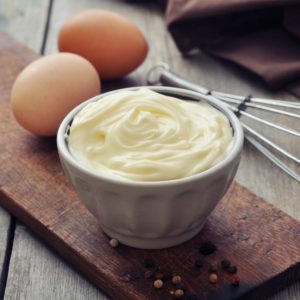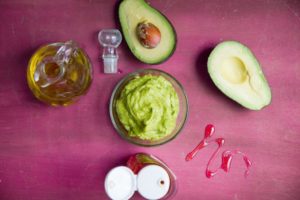How To Deep Condition Hair
Jump To:
Dry hair lacks moisture in them, so using deep conditioning might be your only way to make it softer and more manageable. Moreover, everyone’s hair suffers from damage due to daily styling, hot tools, chemicals, sun exposure, and much more. It might feel a bit overwhelming that comes between you and your good hair days. Here’s how to deep condition hair and keep your hair moisturized.

What makes hair dry?
Your hair’s moisture levels are based on how much your sebaceous glands (located in your hair follicles) produce sebum. Sebum is an oil that lubricates the scalp, skin, and hair.
The amount of sebum the scalp produces differs from person to person and varies throughout life due to hormones, age, environmental factors, and stress. Your hair might become drier if you lighten your hair color because the bleaching process opens up strands to destroy melanin (a pigment).

Styling your hair with heat is also a factor that can dry your hair out, so if you reach for your blow drier or hair iron, you should add deep conditioning to your hair care routine.
What is a deep conditioner?
Every conditioner has a couple of key ingredients:
- Emollients: Emollients or the moisturizers are the substance that softens your hair and reduces moisture loss by generating a protective film around strands.
- Humectants: Humectants bind with water and add moisture to the hair.
Deep conditioners have a higher amount of humectant and emollient ingredients than daily conditioners, and you should keep it in the hair for longer times (for about 20 to 30 minutes) instead of just a few minutes. The deep conditioners have heavier and thicker concentrations. They also continue working for days after usage because they are formulated to infiltrate the strand more deeply than the daily surface-smoothing conditioners.
What are the advantages of deep conditioning?
The ingredients in a deep conditioner hydrate and soften up your damaged hair due to chemical processing (such as hair color, chemical straightening, or perming), heat exposure (which includes flat irons, curling irons, and the sun’s damaging impact). Medications, as some medications are capable of leaving your hair feeling rough and dry.
The elasticity of hair also improves if you use a deep conditioner as it restores moisture that allows the hair to resist tension better and to stretch. Besides making your hair healthier and softer, deep conditioners are vital for avoiding hair breakage. The ingredients in the deep conditioners are meant to nourish and mend your hair.
Therefore, you essentially need to leave the deep conditioner in your hair for a bit longer than the traditional conditioner before rinsing it off, as we said earlier, for better penetration. They help you detangle hair, decrease frizz, increases smoothness, and boost shine.
Who requires a deep conditioner?
As shampoo removes sebum, the main recommendation would be to use a quick rinse-out conditioner each time you wash your hair for using it afterward washing. You can benefit from using a deep conditioner unless you have very oily hair. Every individual has different deep conditioning needs.
Most individuals deep condition 2-4 times per month. But, you should deep condition your hair once a week if you have hair that is severely drying or damaged. As sebum travels most easily down the hair to lubricate straight and loosely curly hair, people with tight curls might find they need to deep condition more frequently.
How should you deep condition at home?
We have added the steps of how to deep condition hair for your assistance:
- Shampoo first (only if necessary): Shampoo only if your scalp is dirty or oily; else, you can directly rinse and skip the shampoo before using a deep conditioner.
- Apply it based on your hair type: If you have tight curls or severely dry hair, you will benefit from applying a deep conditioner very close to the roots. If your hair is oily, use a deep conditioner from the middle to the ends of the hair and use your traditional conditioner closer to your scalp.
- Comb out the hair: Comb the deep conditioner through with your fingers or a wide-tooth comb to coat all of your strands. You will want to apply it to the lower part of your hair, concentrating on the ends.
- Follow the instructions: They might vary, so read the packaging, but on average, you should allow it to stay on for about 20 to 30 minutes.
- Rinse out your hair: Rinse your hair out with cold water because it will help seal the good qualities into your hair.
Some DIY deep conditioning recipes
Some of the best products for deep conditioners are avocado, olive oil, and eggs, as these are rich in omega-three fatty acids, which help repair and strengthen your hair strands. Here are some of the deep conditioner recipes:
Deep Conditioning With Egg

Ingredients
- 1 egg
- ½ an avocado
- 1 tbsp olive oil
Directions to make:
- Blend the given ingredients utilizing a whisk or fork.
- Please apply directly to hair and rinse it out after 20 to 30 minutes with cool water.
Deep Conditioning With Avocado

Ingredients
- ½ an avocado
- 1 tbsp honey
- 1 cup Greek yogurt
- 2 tbsp olive oil
Directions to make:
- Mix the ingredients all together very well.
- Apply it directly to hair and rinse it out after 20 to 30 minutes with cold water.
A note of caution
If you have eczema or psoriasis, or sensitive skin on your scalp, use caution because many of the deep conditioning treatments are heavily fragranced and might trigger a flare-up of your health conditioner. Be sure to keep your freshly conditioned strands away from your face if you are acne-prone, and also remember to change your pillowcase regularly.
If you are looking for buying deep conditioners, then be sure to look for the following emollient ingredients:
- Avocado oil
- Coconut oil
- Honey
- Shea butter.
You can also look for these synthetic emollients, which are more effective than natural oils according to research:
- Amodimethicone
- Dimethicone
- Cyclomethicone
- Dimethiconol
Some tips for deep conditioning
After applying the deep conditioner, cover your hair with a plastic cap and sit under a heated light or fan to help the conditioner penetrate the hair strands. Doing this will allow the deep conditioner to infiltrate the hair and help certain ingredients infuse the hair cuticle. It is essential to make deep conditioning a part of your hair care routine. The main thing to keep in mind is that you still need to deep condition, especially chemically treated or dry hair, even with regular conditioning. We hope that with this article you have got the idea of how to deep condition hair.
